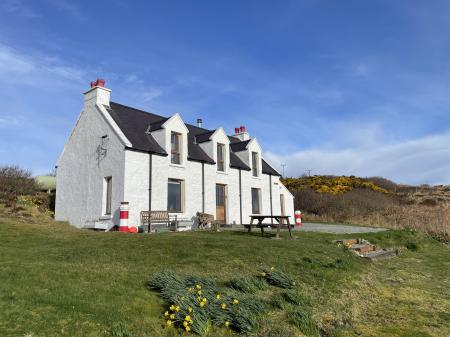
The ruins are quite overgrown, somewhat masking the architecture - indeed, at first glance, it looks like nothing but a tangle of undergrowth, but you soon realise there is much more to the site. A partially submerged stone causeway leads from the south bank of the loch in a curving arc out to the islet.
The causeway appears to have been made by tossing stones into the loch and then topping the resulting pile with broad stepping stones. The actual entrance to the dun is on the far side of the islet from the causeway, where a doorway leads to what appears to have been a small guard chamber.
Excavations in the 19th century revealed a circular tower containing four beehive cells. The walls vary in thickness from 9-15 feet wide and stand to only 6-7 feet. We do not know why the dun was abandoned, but there are traces of fire in several places.
There have been recent examinations of the site, including an underwater investigation, so hopefully more information will be forthcoming about the origin and use of the site.
This has got to be one of the easiest historic sites to access in the Western Isles. The dun is only a few paces to the north-east of the Grimsay circular road, just west of Baymore.


 We've 'tagged' this attraction information to help you find related historic attractions and learn more about major time periods mentioned.
We've 'tagged' this attraction information to help you find related historic attractions and learn more about major time periods mentioned.




